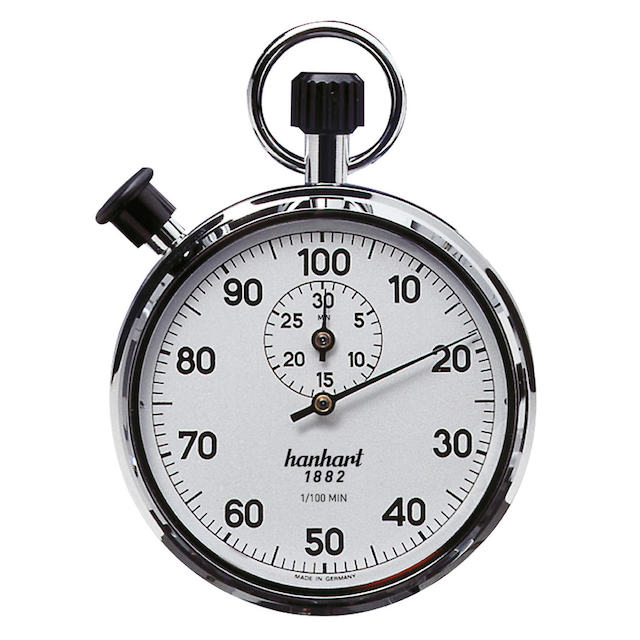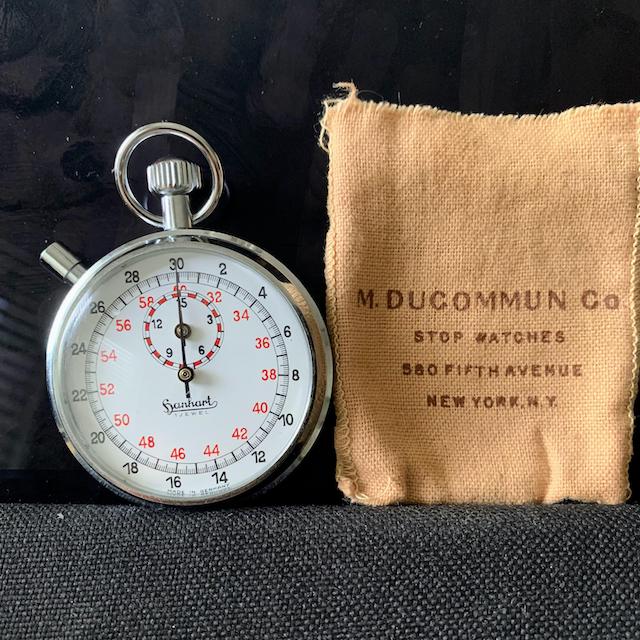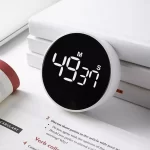Introduction to Stop Watches
Stop watches are powerful tools for tracking time. They measure time intervals with precision. Accurate timing is their main goal. People use them in sports, labs, and daily life. They are different from regular watches. Regular watches show the current time. Stop watches count time from zero upwards. They help users track how long an event lasts. Many activities rely on stop watches. Coaches, referees, and scientists need them often. They also have other uses outside professional settings. They can be handy in the kitchen, at the gym, and for study sessions. These devices come in various types and styles.
Digital and analog stop watches are the most common types. Some have advanced features like memory and alarms. Others are simple and easy to use. What is a stop watch exactly? It is a specialized watch designed for timekeeping accuracy. It counts seconds and fractions of seconds. This blog post will explore everything about stop watches. We will look at different types, how they work, and choosing the right one. Features, uses, maintenance, and technology advancements are also covered.
Types of Stop Watches
Stop watches come in diverse forms to meet different needs. Understanding the types helps you pick the right one. Digital stop watches are popular. They show time on an LCD screen. Analog stop watches have hands that move around a dial. Both types have their pros and cons. For instance, digital models are easier to read at a glance. They often offer more features like memory and alarms. Analog stop watches have a classic look. Many people prefer them for their traditional appeal.
Another category includes mechanical stop watches. They operate without batteries. You wind them up manually. They’re less accurate than digital ones but valued for their craftsmanship. On the flip side, solar-powered stop watches offer a modern touch. They draw energy from sunlight, making them eco-friendly.
Water-resistant and waterproof stop watches cater to swimmers and outdoor enthusiasts. They withstand exposure to water. Some stop watches even come with lap timers. These are great for athletes who need to track their progress. Coaches often use them to time drills and races.
Finally, there are multifunctional stop watches. These devices bundle many features. They can include calendars, alarms, and intervals. They suit users who need more from their device. For example, event organizers and referees find them very useful.
When thinking about ‘what is a stop watch’, consider these various types. They all count time with accuracy. But they differ in design, power source, and additional features. The right type will depend on your specific needs and the context of use.
How Stop Watches Work
Stop watches are precise. They track time in seconds and fractions of seconds. Here’s how they function:
- Digital Stop Watches: When the start button is pressed, the internal clock begins to count time. The LCD shows the elapsed time. Press the stop button, and the counting halts.
- Analog Stop Watches: These have moving hands on a dial. Start the timer, and the second hand ticks around the dial. Stop it, and the hand stops, showing the time passed.
- Mechanical Stop Watches: Twist the knob to wind the spring inside. When released, the gears move the hands. To stop timing, press the knob again.
Digital stop watches use batteries. Some are rechargeable. Analog and mechanical types may need manual winding or battery changes.
Each type has a reset function. This clears the display or sets the hands to zero. This lets users start a new timing session.
Stop watches measure split times too. This lets users record times at different points. It’s useful in races or experiments.
In conclusion, how a stop watch works depends on its type. Digital ones are battery-powered. Analog and mechanical ones use gears and springs. All types are designed for ease and accuracy when timing events.
Choosing the Right Stop Watch for Your Needs
Choosing the right stop watch depends on how you plan to use it. Think about where and when you will use a stop watch. For sport coaches, timing precision and lap memory are key. For swimmers, a waterproof or water-resistant design is critical. If you are a lab technician, a stop watch with high precision and split-time features is best.
Consider the following factors when choosing a stop watch:
- Intended Use: Tailor your choice to your needs. Pick features that help in your specific activity.
- Display Type: Decide between digital or analog. Digital stop watches offer an easy-to-read display. Analog stop watches have a classic, traditional look.
- Durability: Look for sturdy construction if you use it outdoors or in rough conditions.
- Power Source: Consider battery life or the convenience of a solar-powered or mechanical stop watch.
- Water Resistance: Essential for use in wet environments or outdoor activities.
- Size and Weight: A lighter, compact stop watch is easier to carry around.
- Additional Features: Split time, memory, alarms, and countdown timers can be very useful.
Match the stop watch to your environment and activity. This will ensure you get the most out of it. If you’re still uncertain, seek advice from others in your field. Read reviews and compare different models. Remember, the right stop watch is the one that fits your needs perfectly.
Features to Consider When Buying a Stop Watch
When shopping for a stop watch, it’s important to evaluate various features that align with your specific requirements. Here’s a rundown of key attributes to contemplate:
- Accuracy: Look for precision in time measurement, down to fractions of a second.
- Display Clarity: The display should be legible in various lighting conditions.
- Memory Function: For recording and recalling past times, memory is critical.
- Durability: Choose a robust design for withstanding rough use.
- Water Resistance: If you plan to use it near water, this is a must.
- Size and Comfort: A convenient size and a comfortable grip matter.
- Battery Life: Long battery life saves time and effort in replacements.
- Extra Functions: Features like alarms, calendars, and lap counters may be beneficial.
Assess these features against your planned use. For instance, athletes might need lap memory and water resistance. Researchers might stress accuracy and memory function. Ensure you’re clear on what a stop watch is and what it should offer you. By focusing on the features that are most relevant to your activities, you’ll be better positioned to purchase a stop watch that stands as a valuable tool in your endeavors.
Common Uses of Stop Watches in Various Fields
Stop watches are versatile tools with varied applications across different sectors. Here, we look at some of the common areas where stop watches play a crucial role.
- Sports: In athletics, stop watches measure performance down to the split second. Coaches time runners, swimmers, and cyclists to track progress and training intensity.
- Education: Teachers use them for timing tests, experiments, or to manage classroom activities. They help maintain an efficient learning environment.
- Healthcare: Medical professionals rely on stop watches for tracking patient vitals. This includes timing heart rates or breathing during assessments.
- Cooking: Chefs and home cooks use stop watches to ensure precise cooking times. This helps in perfecting recipes and cooking methods.
- Industry and Workplaces: They monitor manufacturing processes or assess task efficiency. Time management is critical in maintaining productivity.
- Science and Research: Researchers use them for experiments requiring precise time measurement. They ensure accuracy in observations and data collection.
When contemplating ‘what is a stop watch’ in practical terms, consider its role in these applications. This small device contributes to data accuracy, performance improvement, and more efficient time management across the board.
Stop Watch Maintenance and Care
Maintaining your stop watch ensures it stays accurate and reliable. Like any tool, it needs care. Here’s how to keep your stop watch in top condition:
- Keep it Clean: Wipe your stop watch after use. Use a soft cloth. Avoid abrasive cleaners that can damage the screen or casing.
- Store Properly: When not in use, keep your stop watch in a dry place. Avoid extreme temperatures and humidity. This can affect the internal components.
- Regular Check-ups: Even digital stop watches need a check-up. Check the battery regularly. Replace it before it runs out to avoid losing data.
- Avoid Water Damage: Even if your stop watch is waterproof, limit exposure to water. After contact with water, dry it thoroughly.
- Handle with Care: Don’t drop or throw your stop watch. Impact can harm the internal mechanisms or the display.
- Read the Manual: Your stop watch’s manual has specific care instructions. Follow these to avoid common mistakes.
Taking care of your stop watch is easy. Simple habits can extend its life. Treat it well, and it will give you precise timing for years to come.
Advances in Stop Watch Technology
The technology behind stop watches has evolved significantly. Recent advancements aim to enhance functionality and user experience. What is a stop watch now if not a marvel of modern engineering? This section explores the cutting-edge features and innovations in stop watch technology:
- Improved Accuracy: Today’s stop watches boast precision to the hundredth of a second, catering to even the most demanding timekeeping needs.
- Connectivity: Some models now offer connectivity to smartphones and computers. This allows for easy data transfer and analysis.
- Material Advances: Modern stop watches use materials like titanium and carbon fiber. These improvements make them more durable and lightweight.
- Eco-Friendly Options: The push for sustainability has led to more solar-powered stop watches that minimize battery waste.
- User Interface: Touch screens and intuitive controls have made stop watches more user-friendly and accessible to people of all ages.
- Multifunctionality: Many stop watches now include features beyond timing. They can serve as pedometers, heart rate monitors, or even GPS devices.
- Design Variety: With a focus on aesthetics, there’s a broader selection of designs to suit personal taste and style preferences.
Advancements in stop watch technology have changed the game. Whether for sports, science, or daily use, they offer more than mere timekeeping. Choosing the latest stop watch may mean enjoying a host of new features that extend beyond the basic function of timing. Keeping abreast of these advances ensures you can always select the most efficient and high-performing stop watch for your needs.




